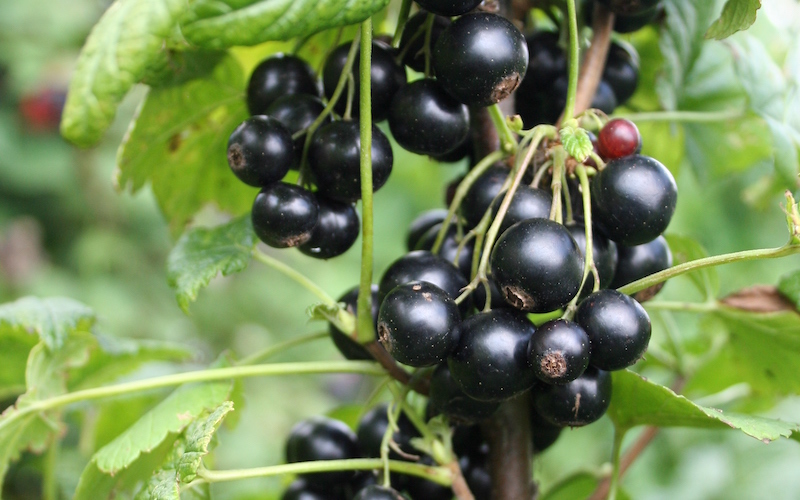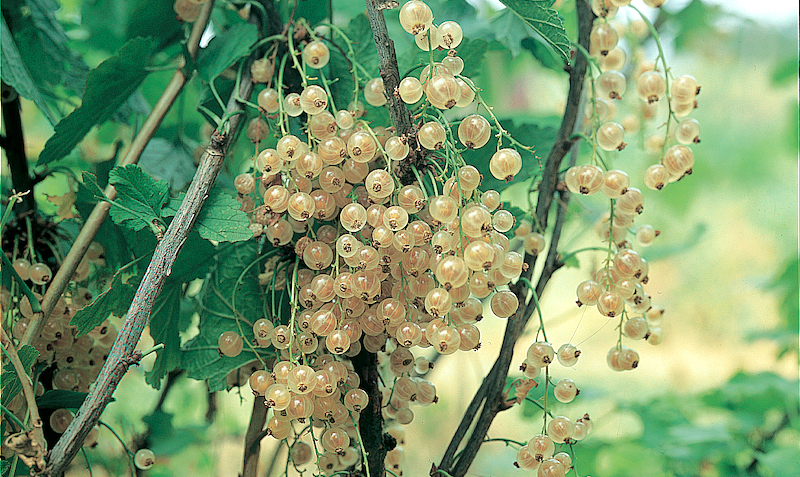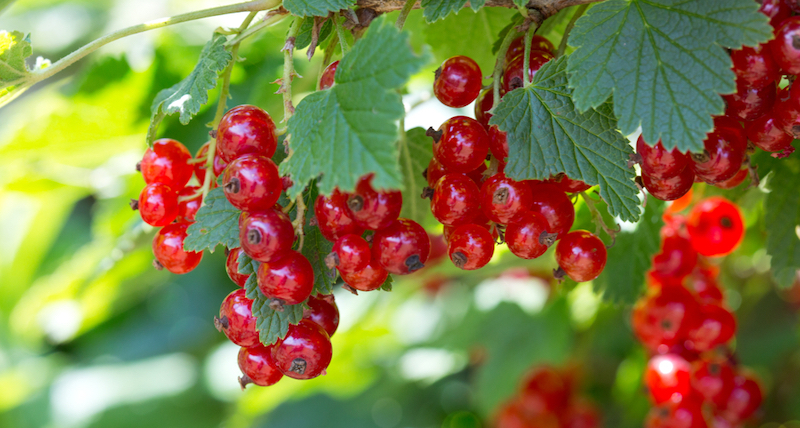If you want to grow your own blackcurrants, redcurrants and white currants, winter is the ideal time to order bare root varieties for your garden or pots. Best planted from November to March when the plants are dormant, make sure the soil isn’t waterlogged or frozen before you begin. When your bare root currants arrive, get them in the ground without delay. If this isn’t possible, open the top of the bag and store your plants for a short while in a cool place. Don’t remove the protective covering from around the roots until you’re ready to plant.
You can also buy your currant plants in containers, and these can be planted all year round. You’ll just need to water more frequently if you order them in the summer.
How to plant blackcurrants

Image: Blackcurrant ‘Summer Pearls Giant’ from Suttons
Easy to grow, blackcurrants are packed with vitamin C and high in antioxidants. Although they can be eaten raw, many people prefer to enjoy their tangy flavour in jams and cordials.
Blackcurrants prefer well-drained, fertile soil, in a sunny position which is sheltered from cold winds. The site should be worked to a depth of 25cm (10″) incorporating plenty of organic material such as well-rotted manure or garden compost. Take care to pick out all roots of perennial weeds before applying a base dressing of general fertiliser.
Remove the protective covering from around the roots and soak them in water for 20 minutes if they appear dry. Dig a planting hole large enough to easily accommodate roots, and sit your plant about 2.5cm (1″) lower than it was previously grown in the Nursery, firming the soil well. Each plant should be 1.2m (4′) apart, with a 1.5m (5′) space between rows.
Immediately after planting, prune each root to 2-3 buds from the ground. This encourages strong new growth to carry the following season’s fruit. In the winter following the first season of growth, prune all weak or damaged shoots down to ground level. Thereafter, pruning should take place after the fruit has been harvested, retaining any strong new shoots that arise from the base of your bush. If new shoots are plentiful, cut out most of the old wood which has already fruited. Otherwise remove a third of the old branches, pruning to a strong young shoot near the base of the bush.
It’s essential to prevent the plants from drying out in the first year and water them in dry weather as the fruits begin to swell.
How to plant redcurrants and whitecurrants

Image: Whitecurrant ‘Blanka’ from Suttons
Redcurrants and whitecurrants are also packed with vitamin C, and with a sweet, tangy flavour, are often eaten straight from the plant or as part of a fruit salad. You can also cook them to make jams, jellies and sweet sauces to pair with rich meats and oily fish.
Both red and white currants prefer moist, well-drained soil in full sun but they will tolerate other soil conditions and some shade. Just keep them out of frost pockets and away from strong wind. To plant, prepare the ground in the same way as you would for blackcurrants, digging it over with plenty of organic matter, removing the weeds and adding a base dressing of general fertiliser.
Remove the protective cover from the roots and soak them in water for 20 minutes. Dig a large planting hole and set your plant in the soil at the same level as it was grown in the Nursery. These currants grow from a short main stem, known as the ‘leg’, above ground level. Each plant should be 1.5m (5′) apart with a 1.8m (6′) gap between rows.
Immediately after planting, prune each branch by half, to an outward-facing bud. If the branches are drooping, prune to an upward-facing bud instead. Then, in the winter following the first season of growth, prune the leading shoots by half, to an outward-facing bud. 8-10 branches should be pruned in this manner to produce the main framework of your bush. Aim for an open goblet shape growing off the short main stem. Once you’ve removed all the damaged, weak and overcrowded shoots, shorten any that are left to 5cm (2″). Repeat this process each year, until you’ve created a strong bush with an open centre.
In the same way as blackcurrants, take care to prevent the plants from drying out in the first year and water them in dry weather as the fruits begin to swell.
Currants are simple to grow, taste delicious and offer a great source of vitamins and minerals. See our full range of soft fruits to see what other healthy crops you could grow on your patio, in your garden or at your allotment.
Lead image: Shutterstock



